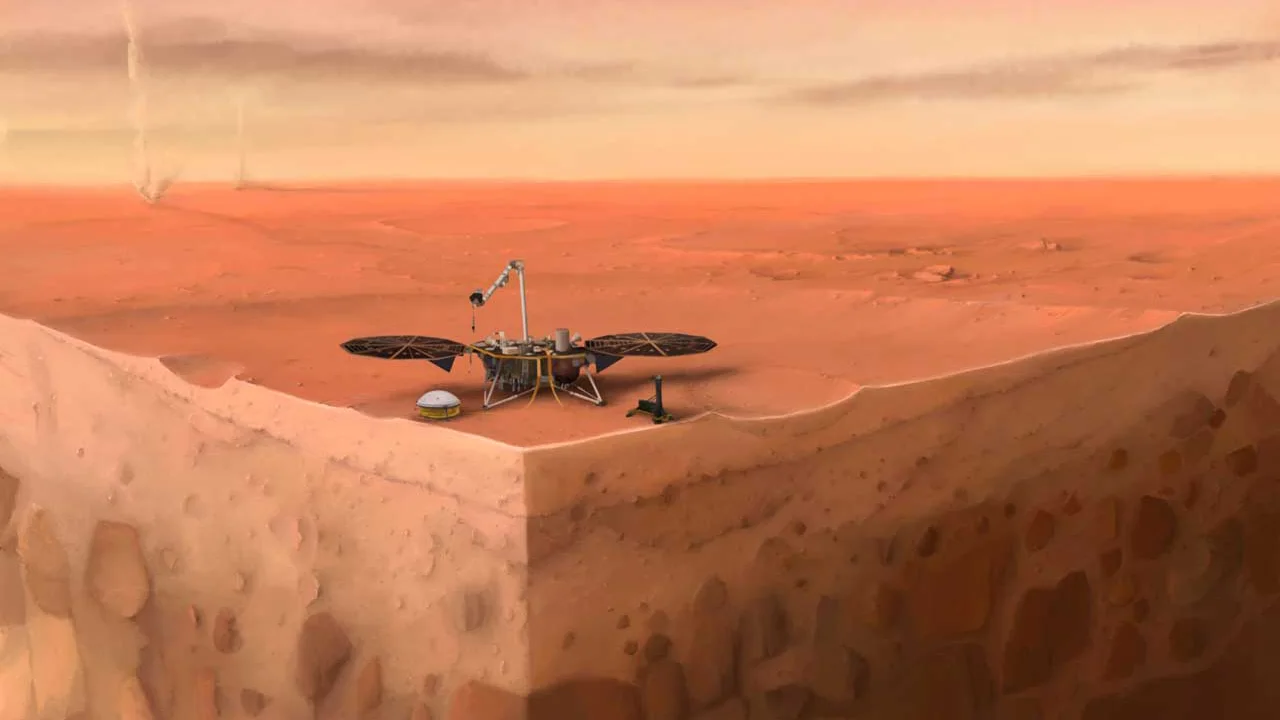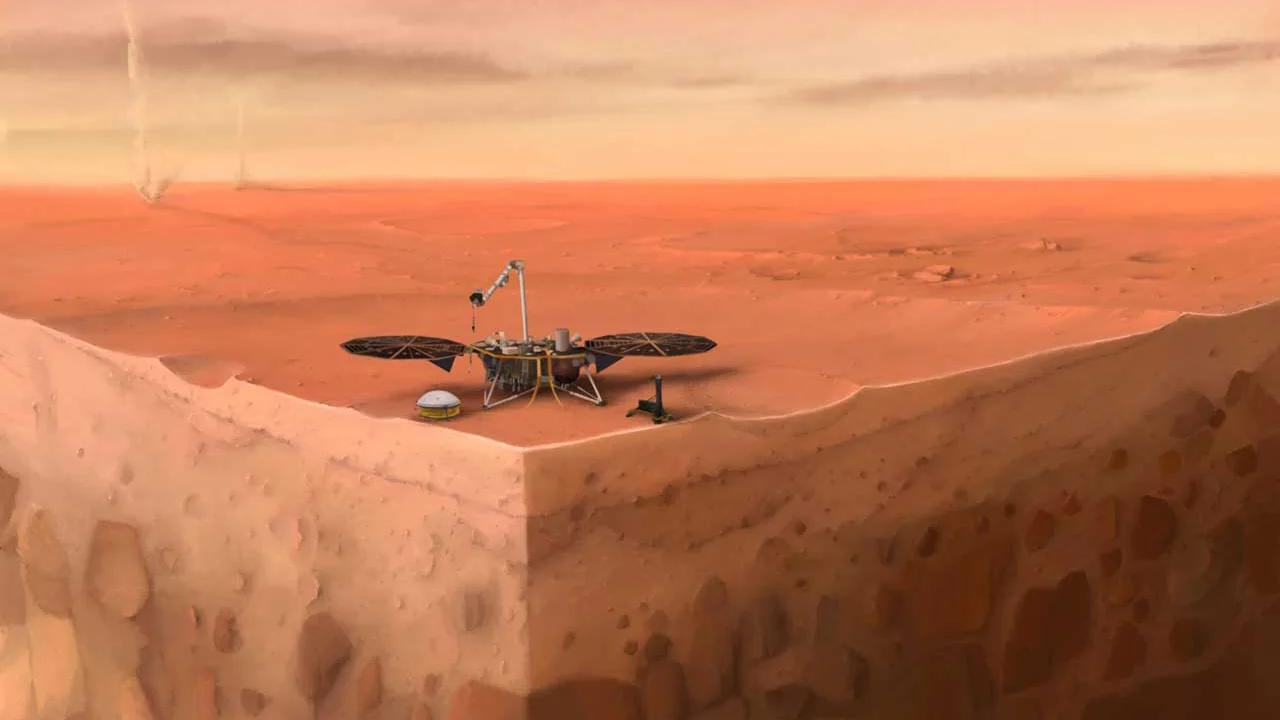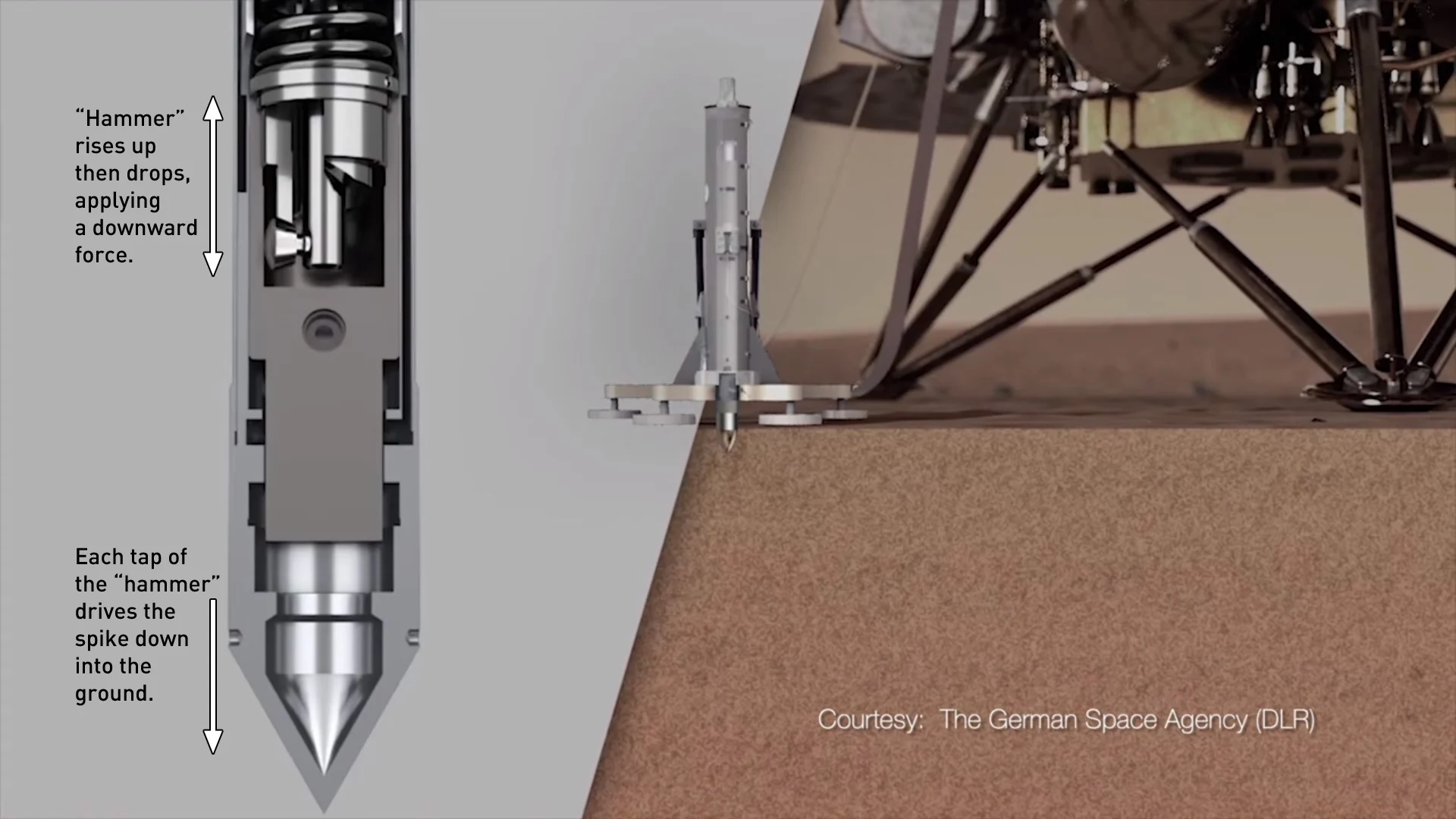
NASA InSight's 'Mole' forced to end mission due to bizarre Martian soil
Thwarted again and again, the InSight team has ended the mission for the heat probe known as "the Mole".
After nearly two years of effort to fully deploy NASA InSight's heat probe, 'the Mole', the team has made the difficult decision to end this part of the mission.
In November 2018, NASA's new InSight lander touched down on a vast Martian plain known as Elysium Planitia. There to collect data on Mars' environment, the lander carried a sensitive seismometer to detect 'marsquakes' and a heat probe — 'the Mole' — which would hammer down into the ground to read the planet's interior temperature. These would be the very first instruments to gather data about the inside of Mars.

An artist's conception drawing of NASA Insight on the surface of Mars, with the ground 'cut away' to reveal its interior structure. Credit: NASA/IPGP/Nicolas Sarter.
Most of the mission's instruments have been performing just fine since then. They have been collecting and returning data to Earth that has already led to some interesting discoveries. However, the Mole — formally known as the Heat Flow and Physical Properties Package (HP³) — has been encountering troubles almost from day one.
Placed onto the surface in its instrument casing, HP³ is a roughly 40-centimetre-long spike connected to the lander by a data tether. Using an internal hammer mechanism, the Mole was designed to tap downward repeatedly, relying on friction with the loose soil around it to make steady progress down to a depth of at least 3 metres. Once there, temperature sensors would return information about how much heat was flowing to the surface.

This schematic from the German Aerospace Center (DLR) shows how the Mole's digging process is meant to work. Credit: DLR/NASA
As the Mole made its first attempts to hammer down, it only reached around 30 centimetres into the ground before it got stuck. Removing the instrument casing, the team discovered that it wasn't a technical issue, such as a jammed tether. Instead, the soil was the problem. It kept clumping together, providing no friction with the probe's sides, so it couldn't go any deeper.
Bringing the lander's arm and scoop into play, the team made some progress by pinning the probe to the side of the hole and pushing down on it with the scoop. Again and again, however, the Martian soil refused to cooperate. At one point, the Mole almost entirely backed out of the hole, reversing all previous progress and forcing the team to start all over again!
At the start of 2021, with the probe finally completely in the ground again and with soil scooped on top and packed down using the arm, the team was ready for one last try.
On January 9, the Mole hammered down into the surface again, with the scoop pressed down on it for support, but again, it made no progress. In a heartbreaking decision, they accepted that this would be the end of the Mole's journey on Mars.
"We've given it everything we've got, but Mars and our heroic mole remain incompatible," Tilman Spohn of the DLR, who heads up the HP³ part of InSight's mission, said in a NASA press release. "Fortunately, we've learned a lot that will benefit future missions that attempt to dig into the subsurface."
Watch below: NASA's InSight lander reveals the interior of Mars
It's not easy admitting defeat. Overall, though, this part of the mission did surprisingly well, considering that the team had no way of knowing what the soil under Mars' surface would be like.
"The mole is a device with no heritage. What we attempted to do — to dig so deep with a device so small — is unprecedented," Troy Hudson, a scientist and engineer at NASA's Jet Propulsion Laboratory, said in the press release. It was Hudson who led the efforts at JPL to get the mole deeper into the Martian crust. "Having had the opportunity to take this all the way to the end is the greatest reward."
While the Mole will now be left where it is, buried just beneath the surface, the rest of InSight's mission has received an extension through 2022. For the next two years, the lander will continue to collect data on the weather in Elysium Planitia, and it will continue to listen for more marsquakes. This will add to our knowledge of Mars' atmosphere, and it will provide scientists with even more insights into the structure of Mars' interior. The lessons learned during the attempts to salvage the Mole will also carry forward into future Mars missions.
"We are so proud of our team who worked hard to get InSight's mole deeper into the planet. It was amazing to see them troubleshoot from millions of miles away," Thomas Zurbuchen, the associate administrator for science at NASA headquarters, said in the press release. "This is why we take risks at NASA — we have to push the limits of technology to learn what works and what doesn't. In that sense, we've been successful: We've learned a lot that will benefit future missions to Mars and elsewhere, and we thank our German partners from DLR for providing this instrument and for their collaboration."











